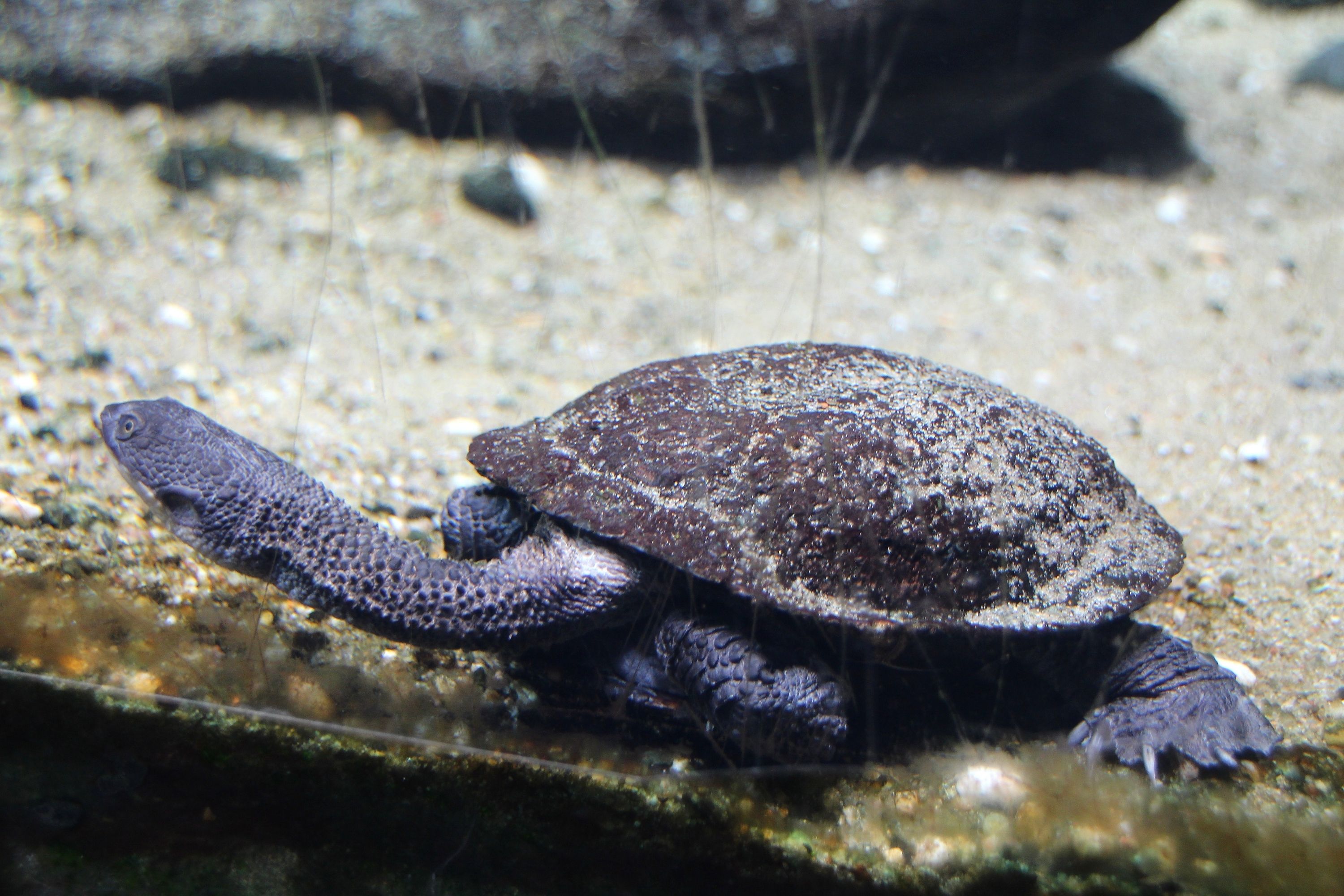Roti Island snake-necked turtle
(Chelodina mccordi)

Description
The Roti Island snake-necked turtle (Chelodina mccordi), also commonly known as McCord's snakeneck turtle, is a critically endangered turtle species from Rote Island in Indonesia. Chelodina mccordi belongs to the genus Chelodina (Australian snake-necked turtles) within the family Chelidae (Austro-South American side-necked turtles). Chelodina mccordi was originally described from Rote Island but was later split into three subspecies. Chelodina mccordi rotensis from eastern Rote and Chelodina mcordi timorensis from Timor. In a recent paper the eastern Rote form was found to be identical to the western form and they were synonymised. This leaves the species with two subspecies one on Rote Island and one on Timor. The Roti Island snake-necked turtle was split from the New Guinea snake-necked turtle and regarded as distinct species in 1994 after Dr. Anders Rhodin, director of the Chelonian Research Foundation in Lunenburg (Massachusetts), found differences between the two species. The first snake-necked turtles on Rote Island had been discovered in 1891 by George Albert Boulenger. Both the specific name, mccordi, and one of the common names, McCord's snakeneck turtle, are in honor of Dr. William Patrick McCord (born 1950), a veterinarian and turtle expert from Hopewell Junction, New York. The carapace of C. mccordi can reach a straight length of 18-24 centimetres (7.1-9.4 in). The color of the carapace is a pale grey brown. Occasionally there are also specimens which have a chestnut-coloured hue. The plastron is a pale buff white. The neck, which is nearly as long as the carapace, is dark brown on the upperparts with round tubercles. The underparts are light beige. The iris is black surrounded by a white ring. The natural habitat of Chelodina mccordi includes swamps, rice terraces, and small lakes.Adults of C. mccordi may have up to three breeding periods in a year. A typical clutch consists of eight to fourteen eggs. The size of an egg is 30 mm × 20 mm (1.18 in × 0.79 in) and may weigh 8-10 grams (0.28-0.35 oz). The first hatchlings emerge after incubating for three months, and the last hatchlings leave after four months. Upon emerging, a hatchling's shell is about 28 mm × 20 mm (1.10 in × 0.79 in) and has yellow spots on the plastron, which become darker in a few weeks until the entire plastron becomes almost black. As the juveniles grow, their coloration progressively becomes paler until they finally achieve the color of the adults.
Taxonomic tree:







